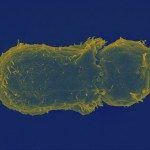Link to Pubmed [PMID] – 1678351
Eur. J. Immunol. 1991 Aug;21(8):1967-70
An early biochemical event associated with T cell activation is tyrosine phosphorylation. We have previously shown that p56lck, a lymphocyte-specific protein tyrosine kinase, is hyperphosphorylated on serine and tyrosine residues 15 minutes after activation via CD2 with a concomitant shift to a higher molecular mass. We now demonstrate that the tyrosine kinase activity of p56lck is increased within seconds following CD2 triggering. This activity decreases thereafter correlating with the appearance of changes in phosphorylation previously described. These results suggest that p56lck may play an important role in the CD2 activation pathway.

